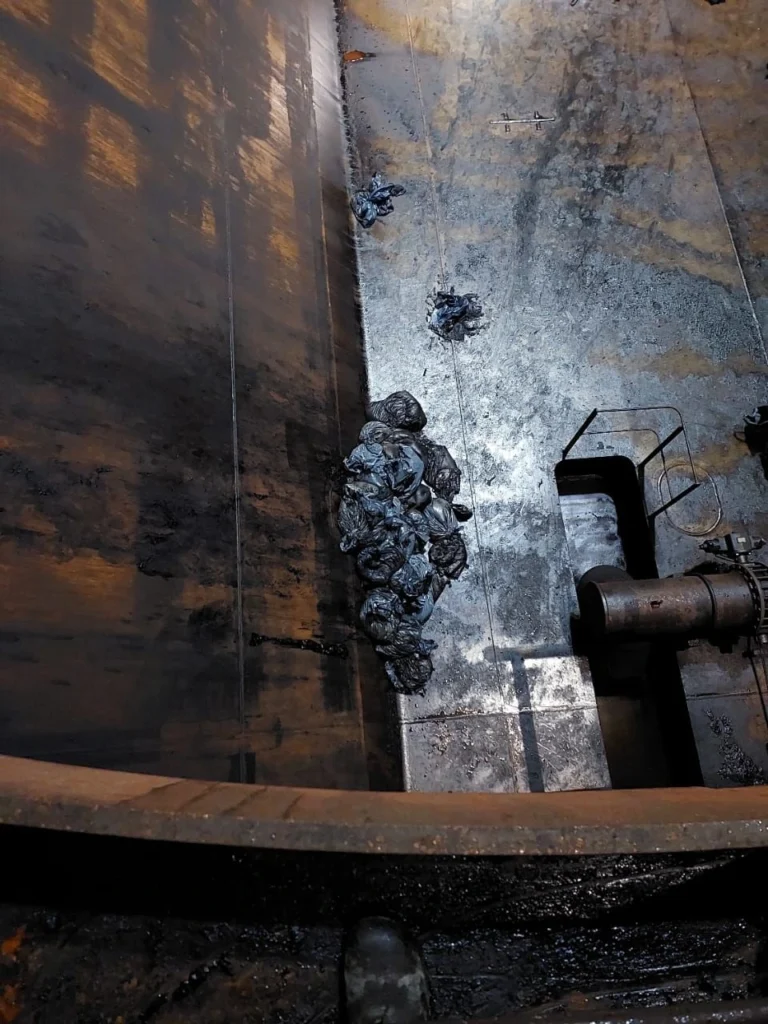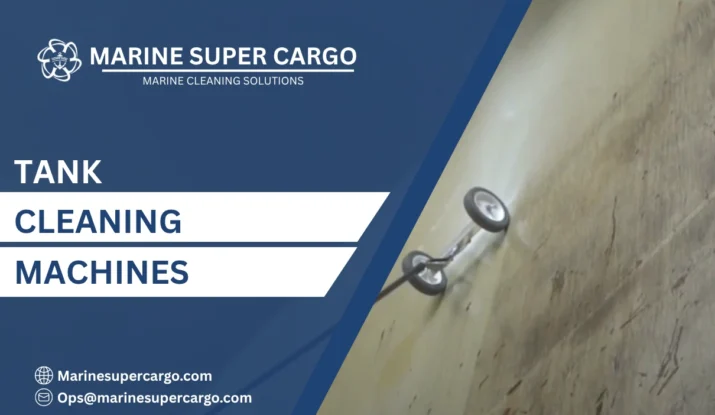Introduction to Tank Cleaning Machines
Tank cleaning machines revolutionized marine operations by mechanizing the laborious process of cargo tank maintenance. These specialized cleaning machines use high-pressure water jets to remove residues from tank surfaces, eliminating manual labor while improving safety and efficiency aboard vessels.
Modern Tank cleaning machines operate through programmable rotation patterns, delivering washing medium to every surface from bottom plating to overhead structures. The evolution of cleaning machines has significantly reduced crew exposure to hazardous atmospheres while ensuring compliance with MARPOL regulations.
Marine Super Cargo specializes in selecting appropriate Tank cleaning machines for diverse vessel types and cargo requirements. Understanding different cleaning machines helps operators optimize tank cleaning operations while maintaining IMO standards.
Portable Tank Cleaning Machines
Hand-Operated Portable Tank Cleaning Machines
Hand-operated portable cleaning machines represent the most basic mechanized option available. These cleaning machines require manual positioning within tanks, with operators controlling water flow and direction externally. Portable cleaning machines offer flexibility for small tanks or areas where fixed systems cannot reach.
Hydraulically-Driven Portable Tank Cleaning Machines
Hydraulically-driven portable cleaning machines provide automatic rotation powered by water pressure alone. These self-rotating cleaning machines eliminate the need for external power sources, making them ideal for hazardous area operations where electrical equipment poses explosion risks.
The Tank cleaning machines utilize water flow through specialized nozzles to generate rotational force, creating 360-degree coverage patterns. Hydraulic cleaning machines prove particularly effective for cargo tanks requiring thorough washing from centerline to port and starboard bulkheads.

Fixed Installation Tank Cleaning Machines
Permanently Mounted Cleaning Machines
Permanently mounted Tank cleaning machines represent the most sophisticated tank washing systems. These cleaning machines install directly into tank structure at strategic locations, providing comprehensive coverage without crew entry. Fixed cleaning machines comply with IMO requirements for crude oil washing (COW) systems.
Programmable Automated Tank Cleaning Machines
Programmable automated cleaning machines incorporate advanced controls allowing precise washing patterns. These sophisticated cleaning machines adjust pressure, flow rate, and rotation speed based on cargo residue types. Automated cleaning machines optimize resource consumption while maximizing cleaning effectiveness.
Marine Super Cargo recommends programmable cleaning machines for vessels trading between incompatible cargoes requiring frequent, thorough tank preparation. These cleaning machines document washing cycles automatically, supporting MARPOL Annex I record-keeping requirements.
Cleaning Machines Classification by Drive Method
Water-Driven Cleaning Machines
Water-driven cleaning machines use incoming water flow to power rotation mechanisms. These cleaning machines prove most reliable since they contain no electrical or pneumatic components requiring maintenance. Water-driven cleaning machines operate safely in explosive atmospheres without special certifications.
Motor-Driven Cleaning Machines
Motor-driven cleaning machines incorporate electric or pneumatic motors for precise rotation control. These cleaning machines maintain consistent speeds regardless of pressure fluctuations, ensuring predictable washing patterns. Motor-driven cleaning machines suit chemical carriers requiring specific cleaning protocols.
Applications of Different Cleaning Machines
Crude Oil Tank Applications
Crude oil washing requires robust cleaning machines withstanding high temperatures and abrasive sediments. Specialized cleaning machines for crude service use hardened materials resisting erosion from sand and scale. These cleaning machines typically operate at 8-12 bar pressure with water heated to 70-80°C.
The cleaning machines must cover large tank areas efficiently since crude carriers feature capacious cargo spaces. Multiple cleaning machines operate simultaneously, washing surfaces from forward to aft positions systematically per COW procedures.
Product Carrier Applications
Product carriers require versatile cleaning machines switching between different cleaning intensities. These cleaning machines provide gentler washing for light products while delivering powerful jets for persistent residues. Product carrier cleaning machines emphasize residue-free results preventing cargo contamination.
Chemical Carrier Applications
Chemical carriers demand specialized cleaning machines compatible with diverse chemicals. These cleaning machines feature materials resisting corrosion from acids, caustics, and solvents. Chemical carrier cleaning machines accommodate varying tank sizes, from small parcels to larger dedicated tanks.
Technical Specifications of Cleaning Machines
Pressure and Flow Requirements
Effective cleaning machines operate within specific pressure and flow parameters. Standard cleaning machines function at 8-12 bar pressure with flow rates between 30-60 cubic meters per hour. Higher capacity cleaning machines suit large crude carriers while smaller cleaning machines serve product and chemical vessels.
Coverage Patterns
Cleaning machines generate various coverage patterns—from simple circular to complex spiral trajectories. Advanced cleaning machines employ multi-nozzle arrangements creating overlapping patterns ensuring complete surface contact. The cleaning machines’ patterns must reach from bottom plating through longitudinal bulkheads to overhead structures.
Maintenance and Operational Considerations
Routine Maintenance for Cleaning Machines
Regular maintenance extends cleaning machines’ operational life while ensuring reliable performance. Inspect cleaning machines after each use, checking nozzles for blockages and wear. Lubricate cleaning machines’ rotating components per manufacturer specifications.
Store cleaning machines properly between operations, protecting them from damage. Maintain spare parts inventory including nozzles, seals, and bearings ensuring cleaning machines remain available when needed.
Safety Protocols Using Cleaning Machines
Operating cleaning machines requires adherence to safety protocols outlined in vessel’s safety management system. Never enter tanks while cleaning machines operate. Ensure proper pre-cleaning inspections verify safe conditions before deploying cleaning machines.
Monitor cleaning machines throughout operations, watching for unusual vibrations or flow interruptions. Secure cleaning machines properly preventing movement during vessel motion in seaway conditions.
FAQs About Tank Cleaning Machines
Q1: How do I select appropriate cleaning machines for my vessel?
Selection depends on vessel type, cargo traded, tank sizes, and operational patterns. Crude carriers need robust fixed cleaning machines, while chemical vessels require versatile portable cleaning machines. Consult specifications matching your cargo requirements.
Q2: What pressure should cleaning machines operate at?
Most cleaning machines operate effectively between 8-12 bar pressure. Crude oil washing cleaning machines may require higher pressures (10-15 bar) while chemical tank cleaning machines often work at lower pressures (6-10 bar) protecting sensitive coatings.
Q3: How many cleaning machines are needed per tank?
Large cargo tanks typically require 2-4 cleaning machines for adequate coverage, positioned strategically throughout tank volume. Smaller tanks may need only one properly positioned cleaning machine achieving complete washing coverage.
Q4: Can cleaning machines operate with seawater?
While cleaning machines physically operate with seawater, effectiveness varies by cargo type. Crude residues respond better to freshwater or heated seawater. MARPOL regulations may restrict seawater discharge depending on operational area.
Q5: How often should cleaning machines undergo maintenance?
Inspect cleaning machines after every use, performing detailed maintenance quarterly. Annual servicing should include complete disassembly, parts replacement, and performance testing ensuring cleaning machines meet manufacturer specifications and operational requirements.


